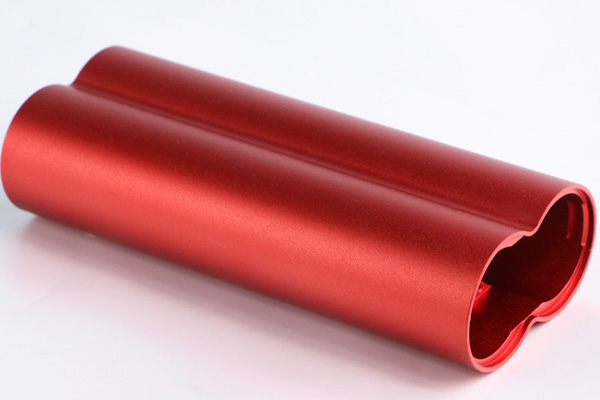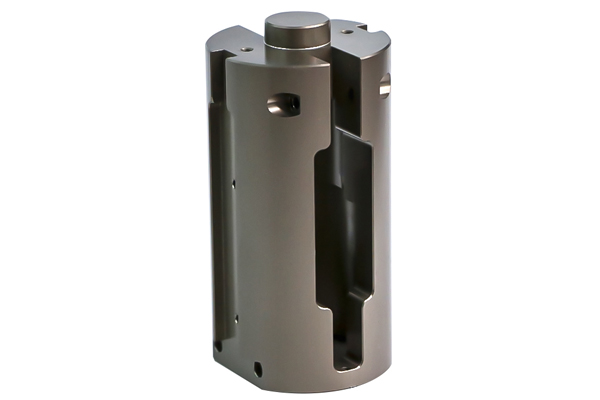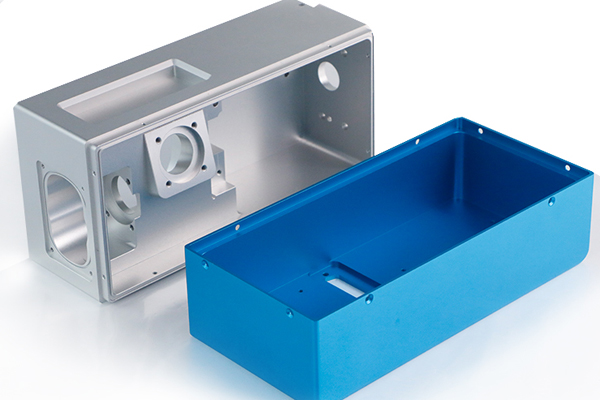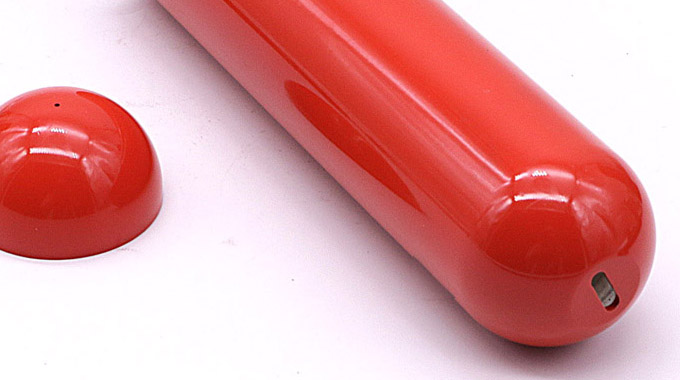15 years one-stop China custom CNC machining parts factory
 179 |
Published by VMT at Sep 19 2024
179 |
Published by VMT at Sep 19 2024
Aluminum, one of the most versatile materials in manufacturing, is widely used in industries such as automotive, aerospace, electronics, and construction due to its lightweight, durability, and excellent resistance to corrosion. However, despite its inherent strength, raw aluminum is often prone to surface imperfections, environmental degradation, and oxidation over time. To enhance its appearance, durability, and performance, aluminum often undergoes various coating processes, each tailored to specific industrial needs.
This guide explores the different types of coatings available for aluminum, including anodizing, powder coating, and painting. Understanding the advantages and limitations of these coatings is essential for manufacturers and engineers working with aluminum CNC machining parts. It also helps industries select the best finish for applications that demand performance, aesthetics, and long-term durability.
Aluminum is naturally resistant to corrosion due to its ability to form a thin oxide layer when exposed to air. However, this natural oxidation process can lead to surface imperfections over time, impacting both appearance and structural integrity. Coating aluminum enhances this natural protection and provides additional benefits depending on the chosen method.
One of the main reasons to coat aluminum is to improve its resistance to wear and tear. Coatings add a durable layer that protects against scratches, impacts, and environmental factors such as UV exposure, moisture, and extreme temperatures. Furthermore, coating improves the aesthetic appeal of aluminum, making it suitable for use in high-visibility applications like consumer electronics, automotive components, and architectural elements.
For CNC machining factories, coating processes help meet specific industry standards for appearance and performance. Whether for custom CNC machining parts or CNC prototype machining, coatings enhance the functionality and longevity of the machined components.
In the world of aluminum coatings, three main methods stand out: anodizing, powder coating, and liquid painting. Each method offers distinct benefits and is suited for different applications.
Anodizing: This electrochemical process enhances the oxide layer on aluminum, making it thicker and more resistant to corrosion and wear. It’s known for creating a durable, uniform finish and is popular for parts requiring high durability and a metallic appearance.
Powder Coating: Powder coating involves applying a dry powder to the aluminum surface, which is then cured under heat. This method provides a thicker, more protective layer than anodizing or painting and is highly resistant to chipping, fading, and scratching.
Painting: Liquid painting is another common method for coating aluminum, offering flexibility in color selection and gloss levels. However, it may not be as durable as anodizing or powder coating, making it more suitable for aesthetic purposes rather than heavy-duty applications.
Anodizing
Anodizing is a popular choice for enhancing the durability and appearance of aluminum. It’s an electrochemical process that increases the natural oxide layer on the surface of aluminum parts, creating a protective barrier that enhances resistance to corrosion, wear, and weathering.
The process involves submerging aluminum parts into an electrolytic solution and passing an electric current through the solution. This oxidizes the aluminum and forms a controlled, durable oxide layer. Anodizing can also be combined with dyeing processes to introduce a range of colors, although the color palette is often more limited compared to other coating methods like painting or powder coating.

The Different Types of Anodizing:
Clear Anodizing: This process creates a transparent oxide layer that provides protection while maintaining the natural metallic look of the aluminum. It’s often used for parts that need durability without changing their appearance, such as aerospace components and CNC machined parts.
Dye Anodizing: Dye anodizing introduces color into the anodized layer by submerging the aluminum into dye baths after anodizing. This method provides a colored finish that is durable and resistant to fading. However, the color range is generally limited compared to painting or powder coating.
Hard, Clear, and Dye Anodizing: Hard anodizing increases the thickness of the oxide layer, providing superior resistance to wear and corrosion. This method is commonly used in industries requiring robust parts, like automotive and industrial equipment. Combining hard anodizing with dyeing can provide both durability and aesthetics.

Sandblasting + Anodizing: Before anodizing, the aluminum can be sandblasted to create a textured surface, improving adhesion for the anodized layer. This method provides a matte finish, which is preferred for certain aesthetic applications.

Advantages of Anodized Aluminum
Long-Lasting and Natural Effect: Anodized aluminum offers a permanent, integral layer that cannot peel or flake. This makes it highly durable and suited for long-term applications.
Easy to Dye and Clean: Anodized surfaces can be easily dyed and provide a clean, professional look that is low-maintenance. They resist staining, making them ideal for visible components in consumer electronics or appliances.
Cost-Effective in the Long Run: While the upfront cost of anodizing may be higher, the long-term benefits of reduced maintenance and extended part life often make it a more cost-effective solution over time.
Highly Durable: The anodized layer is extremely hard, providing excellent resistance to abrasion, making it suitable for high-wear environments.
Corrosion and Weather Resistance: The enhanced oxide layer is naturally resistant to corrosion, even in harsh weather conditions or industrial environments.
No Fading, Not Affected by Sunlight: Unlike painted finishes, anodized coatings do not fade or chalk when exposed to sunlight, making them ideal for outdoor use.
Environmentally Friendly: Anodizing is a safe and eco-friendly process that does not involve volatile organic compounds (VOCs), making it a more sustainable choice for manufacturers concerned with environmental impact.
Disadvantages of Anodized Aluminum
Limited Color Selection: Compared to powder coating and painting, the color options for anodized aluminum are relatively limited, with fewer bright or vibrant hues available.
Difficult to Touch Up on Site: Once anodized, the surface is difficult to repair or touch up, requiring professional recoating if damaged.
Prone to Mineral Deposits: In certain environments, anodized aluminum can accumulate mineral deposits, particularly if exposed to hard water or other contaminants.
Aluminum Alloys and Elements Cause Color Inconsistency: Different alloys of aluminum can lead to color inconsistency during anodizing, making it challenging to achieve uniform finishes on mixed materials.
Inconsistent Color on Large Items: Large or complex parts may exhibit color variation due to differences in the anodizing bath’s distribution, leading to less consistent appearances.
Surface Defects of Aluminum May Be Visible Through the Anodized Layer: Any surface imperfections on the aluminum will remain visible after anodizing, making it important to start with high-quality, defect-free aluminum.
Liquid Painting
Liquid painting involves applying a liquid paint to the surface of the aluminum, followed by drying or curing. It’s a flexible coating method that offers a wide variety of colors and finishes, making it ideal for applications where aesthetics are a priority.
Advantages and Disadvantages of Liquid Painting Aluminum:
Advantages:
Wide color selection: Liquid painting allows for almost limitless color options and custom finishes.
Flexibility: It’s easier to achieve a range of gloss levels, textures, and sheens.
Easier touch-ups: Unlike anodizing, liquid paint can be touched up on site if damaged.
Disadvantages:
Less durable: Liquid paint is prone to chipping, scratching, and fading over time.
Requires more maintenance: The paint layer can wear down, especially in high-traffic areas or outdoor environments.
Environmental impact: Liquid painting involves solvents that release VOCs, making it less environmentally friendly than other methods.
Powder Coating
Powder coating is a dry finishing process where a powder is electrostatically applied to the aluminum surface and then heated to form a durable, uniform layer. This method is highly popular in industries that require both aesthetic appeal and long-lasting protection.

Advantages and Disadvantages of Powder Coating Aluminum:
Advantages:
Highly durable: Powder-coated aluminum offers excellent resistance to chipping, scratching, and fading.
Wide color options: Powder coating provides a broad spectrum of colors, finishes, and textures.
Environmentally friendly: Powder coating is a VOC-free process, making it a more sustainable choice than liquid painting.
Corrosion resistant: The thick layer created by powder coating offers superior protection against corrosion, particularly in outdoor applications.
Disadvantages:
Thicker coating: Powder coating may result in a thicker finish than other methods, which can affect parts requiring tight tolerances.
Difficult to repair: Like anodizing, powder-coated finishes can be difficult to touch up if damaged.
High initial setup cost: The equipment and materials required for powder coating can be more expensive than other methods, although the long-term savings in durability and maintenance often outweigh this.
Painting
Spray painting aluminum is a versatile process that involves applying liquid paint through a spray gun. It offers flexibility in terms of finish and color options, making it a popular choice for aesthetic applications.

Advantages and Disadvantages of Spray Painting Aluminum:
Advantages:
Versatile color options and finishes: Spray painting allows for a wide range of custom colors, gloss levels, and textures.
Quick application: Spray painting can be applied quickly, making it suitable for high-volume production runs.
Disadvantages:
Less durable: Spray-painted surfaces are prone to wear and tear, especially in harsh environments.
Requires regular maintenance: Spray-painted finishes may need reapplication or touch-ups over time, especially in outdoor or high-traffic areas.
Coating aluminum offers several key benefits, especially for industries using CNC machined parts:
Price: While coatings may increase the initial cost, they enhance durability, reducing long-term maintenance and replacement costs.
High Yield Strength: Coated aluminum parts maintain their strength while becoming more resistant to environmental damage.
Application Diversity: Coatings make aluminum suitable for a variety of applications, from decorative consumer goods to heavy-duty industrial components.
Oxidation Resistance: Coatings significantly enhance aluminum’s resistance to oxidation, preventing rust and corrosion.
Sulfur Resistance: Coated aluminum can resist sulfur corrosion, making it ideal for use in harsh industrial environments.
Disadvantages of Aluminum Coating
Despite its advantages, there are some drawbacks to coating aluminum:
Initial Cost: The coating process can add to the initial cost of aluminum parts, particularly for small production runs.
Surface Preparation: Proper surface preparation is crucial before applying any coating, as imperfections can lead to uneven coverage or poor adhesion.
Repair and Touch-Ups: Depending on the coating type, it can be challenging to repair or touch up the surface once it’s damaged.
The powder coating process for aluminum involves several key steps:
Surface Preparation: The aluminum part is cleaned and treated to ensure the powder adheres evenly.
Powder Application: The powder is electrostatically sprayed onto the part, ensuring an even coat.
Curing: The coated part is placed in a curing oven, where the powder melts and forms a smooth, uniform layer.
Cooling: After curing, the part is allowed to cool, hardening the protective layer.
While both powder and liquid coatings offer protection and aesthetics, they differ in several ways:
Durability: Powder coating is generally more durable and resistant to chipping, while liquid coatings may wear down over time.
Application: Liquid coatings are more flexible in terms of gloss and color options, but powder coatings provide a thicker, more protective layer.
Environmental Impact: Powder coatings are more eco-friendly as they don’t emit VOCs, unlike liquid coatings that use solvents.
Durability: Both methods offer excellent durability, but anodizing tends to penetrate the surface, providing a hard, protective layer, while powder coating adds a thicker, external layer.
Color Choices: Powder coating offers a broader range of color options compared to anodizing, which has more limited hues.
Environmental Considerations: Powder coating is more environmentally friendly due to its lack of VOC emissions, whereas anodizing is a more natural process but can involve the use of chemicals.
Durability: Anodized aluminum is generally more durable than painted aluminum, especially in high-traffic or outdoor applications.
Color and Finish Options: Liquid painting offers more versatility in terms of color and gloss finishes, while anodizing provides a more metallic, uniform appearance.
Maintenance: Painted surfaces require more maintenance and may need touch-ups, while anodized surfaces are low-maintenance and long-lasting.
Selecting the right coating for aluminum CNC machining parts is crucial for achieving optimal performance and durability. Anodizing, powder coating, and liquid painting each offer unique benefits depending on the application, environment, and desired appearance. Manufacturers working with CNC prototype machining and CNC machining services should carefully consider the intended use of the parts, as well as the strengths and limitations of each coating method.

Which coating is best for aluminum?
The best coating depends on the specific application. For high durability and a natural metallic look, anodizing is ideal. Powder coating offers greater protection and color options, while liquid painting is suitable for decorative purposes.
What are the different types of aluminum finishes?
Common finishes include anodizing, powder coating, and painting. Each finish provides different levels of protection and aesthetic options.
Which coating can prevent aluminum from corrosion?
Anodizing and powder coating both offer excellent corrosion resistance, with powder coating generally providing thicker protection.
What is the best surface finish for aluminum?
Anodizing is often considered the best surface finish for parts requiring high durability and a metallic appearance, while powder coating is preferred for high-impact and corrosion-resistant applications.
What is the hardest coating for aluminum?
Hard anodizing provides the hardest and most durable coating for aluminum, making it suitable for heavy-duty industrial applications.
